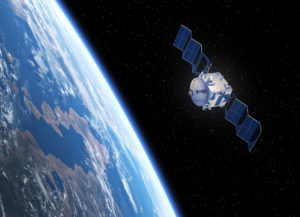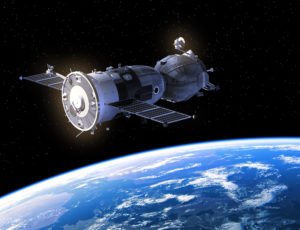The cosmos has always been an alluring frontier for humanity, beckoning us with the mysteries of the universe. As we venture further into space, one critical aspect of space exploration has been the quest for a reliable power source. This is where solar panels on spacecraft come into play, providing an essential lifeline for missions, satellites, and even space stations like the International Space Station (ISS). In this article, we’ll dive deep into space-based solar technology, exploring the marvel of solar panels on spacecraft and their pivotal role in the realm beyond our atmosphere.
Contents
Key Takeaways
- Solar panels on spacecraft are a vital power source for missions, satellites, and space stations, offering reliability and sustainability in harsh space conditions.
- Solar technology has evolved significantly, with photovoltaic cells and solar arrays maximizing energy collection, enabling continuous operations in orbit.
- Challenges like extreme conditions and maintenance are met with innovative solutions, ensuring space-based solar power’s longevity and prospects in our cosmos exploration.
Solar Power for Spacecraft
Solar Technology: Advancements in Solar Power
Solar panels have come a long way since their inception on Earth. Today’s space-based solar panels are a testament to the relentless pursuit of efficiently harnessing the sun’s power. These state-of-the-art panels use advanced photovoltaic technology, ensuring maximum energy capture in harsh space conditions.
Solar Panels in Space: A Brief History
The use of solar panels on spacecraft traces back to the early days of space exploration. NASA’s Vanguard 1, launched in 1958, was one of the pioneering missions to utilize solar power. Since then, solar panels have become a staple in space missions, offering a clean and renewable source of energy that is vital for extended missions into the deep reaches of our solar system.
Spacecraft Use Solar Power: Why It Matters
Why is solar power the preferred choice for spacecraft? The answer lies in its reliability and sustainability. Unlike traditional power sources, such as batteries or nuclear reactors, solar panels provide a continuous energy source as long as they are exposed to sunlight. This is particularly crucial for spacecraft on extended missions that venture far from Earth’s orbit.

The Science Behind Solar Panels
Solar Cells: The Heart of Solar Panels
At the core of every solar panel are solar cells responsible for converting sunlight into electricity. These highly specialized cells, often made of semiconductor materials like silicon, are designed to efficiently capture photons and generate electrical current through the photovoltaic effect.
Solar Arrays: Maximizing Energy Collection
Spacecraft are equipped with solar arrays composed of numerous interconnected solar panels to maximize energy collection. These arrays can be oriented to track the sun, ensuring that the panels receive optimal sunlight throughout the mission. This technology allows spacecraft to generate and store the energy needed to power their systems, instruments, and communication devices.
Spacecraft Powered by Solar Panels
Satellites: Dependence on Solar Power
Satellites are among the most significant users of solar panels in space. Whether for Earth observation, communication, or scientific research, satellites rely on solar panels to provide a constant power source as they orbit our planet. This dependence on solar energy ensures uninterrupted operation, making satellites vital for various applications.
The International Space Station (ISS): A Marvel of Solar Technology
The ISS, a symbol of international cooperation and scientific endeavor, is a shining example of the capabilities of space-based solar panels. Its expansive solar arrays, covering an area equivalent to a football field, capture sunlight and convert it into electricity to sustain life and conduct experiments in the unique microgravity environment of space.
The James Webb Space Telescope: Unveiling the Universe with Solar Power
The James Webb Space Telescope, NASA’s ambitious project set to revolutionize our understanding of the cosmos, relies on a cutting-edge solar panel system. Designed to operate in the frigid conditions of deep space, these solar panels provide the energy needed to power the telescope’s advanced instruments and transmit the breathtaking images it captures.
Vanguard 1: The Pioneer of Space-Based Solar Panels
Vanguard 1, launched over six decades ago, may have been a humble satellite by today’s standards. Still, it played a pivotal role in demonstrating the feasibility of using solar panels for power in space. It orbited the Earth for years, showing that solar energy could be harnessed effectively beyond our planet’s atmosphere.

Challenges and Solutions
Extreme Conditions: Surviving in Space
Space is a hostile environment, with extreme temperature fluctuations, radiation, and micro-meteoroids posing constant threats to spacecraft and their solar panels. Engineers and scientists have developed innovative solutions, including radiation-resistant coatings and robust panel designs, to ensure the longevity of space-based solar technology.
Maintenance and Repairs: Ensuring Longevity
Even the most durable solar panels can degrade over time due to exposure to the harsh space environment. To counter this, astronauts aboard the ISS conduct regular maintenance and even replace aging panels to ensure the station’s power supply remains reliable. These efforts highlight the importance of adaptability and resilience in space missions.
Future Prospects: Innovations in Space-Based Solar Power
The future of space-based solar power is promising. Ongoing research and development aim to improve the efficiency of solar panels, making them even more reliable for long-duration missions. Additionally, advancements in energy storage technologies will enable spacecraft to store excess energy for use during periods of darkness, such as when orbiting behind a celestial body.
Expert Insights From Our Solar Panel Installers About Solar Panels on Spacecraft
Spacecraft solar panels are a testament to human ingenuity, combining advanced photovoltaic technology with robust designs to withstand the harsh conditions of space. This ensures reliable energy for extended missions.
Senior Solar Engineer
The key to effective solar power in space is maximizing energy capture and storage. By orienting solar arrays to track the sun, spacecraft can harness optimal energy, crucial for powering instruments and communication systems.
Solar Technology Specialist
Regular maintenance and innovative engineering solutions are vital to counteract the degradation caused by extreme space conditions, ensuring the longevity and efficiency of solar panels on spacecraft.
Solar Maintenance Specialist
Experience Solar Excellence with Us!
Trust in Solar Panels Network USA, where our seasoned experts deliver top-quality solar solutions for homes and businesses nationwide. With a legacy of countless successful installations and a commitment to sustainable energy, we’re your reliable partner in the solar journey. Ready for a brighter, eco-friendly future? Call us now at (855) 427-0058 and harness the power of the sun!
Conclusion
As we gaze toward the heavens and explore the vast expanse of our solar system, solar panels on spacecraft stand as a beacon of human ingenuity. These remarkable devices power our scientific endeavors and enable our continued presence beyond Earth’s boundaries. From satellites in orbit to the International Space Station and beyond, solar panels are the unsung heroes that keep our dreams of space exploration alive. With ongoing innovation and dedication, the future of space-based solar technology promises to unlock even greater mysteries of the cosmos.
In this age of discovery and wonder, we look to the sky and envision a future where solar energy propels us deeper into the reaches of space. The pioneering spirit of exploration continues to drive us to new frontiers.
About the Author
Solar Panels Network USA stands at the forefront of solar energy solutions, driven by a team of seasoned solar engineers and energy consultants. With over decades of experience in delivering high-quality solar installations and maintenance, we are committed to promoting sustainable energy through customer-centric, tailored solutions. Our articles reflect this commitment, crafted collaboratively by experts to provide accurate, up-to-date insights into solar technology, ensuring our readers are well-informed and empowered in their solar energy decisions.

